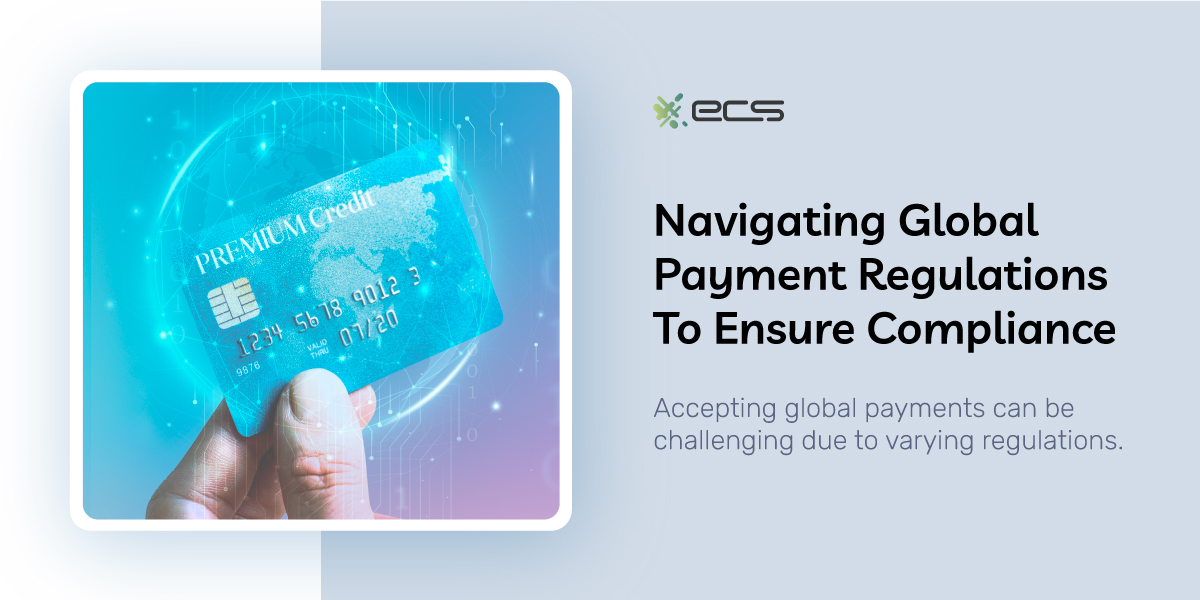Globalization has opened countless new markets for businesses around the world. Manufacturers can now reach suppliers around the globe, and e-commerce businesses can sell their products worldwide.
This has dramatically increased productivity and overall economic growth for nations of all sizes. However, it has also come with a few growing pains.
Many of those pains deal with cross-border payments or global payments. Each country can have its own regulatory framework. So, when doing business with a customer in a foreign country, you must ensure you follow all regulations to avoid any possible civil or even criminal issues.
Over time, many countries and fintech companies have been working on solutions for these problems, and the landscape has improved greatly. However, every business still needs to familiarize itself with global payment regulations and how to navigate them for financial compliance.
To help your business unlock global markets while staying in regulatory compliance, we’ve created this guide to help you understand the basics of global payments and what you need to be aware of to avoid any potential negative issues.
The Basics Of Global Payments
Global payments are essentially any payment or transfer of funds in which the sender and receiver originate in different countries. They can be for business-to-consumer (B2C) transactions or business-to-business (B2B) transactions.
Besides just the sender and receiver, if the different banks involved in a transfer or purchase are located in different countries, this also falls under global payments, and there are regulations that you must follow. For example, if a merchant’s acquiring bank is in a different country than a customer making a purchase, that can increase the complexity of the transaction in a B2C scenario.
Cross-border payments are also a typical form of global payments. In cross-border payments, a complex payment system handles the transfer from the sending bank to the receiving bank. Sometimes, this process involves setting up separate bank accounts where funds in the local currency are held to speed up the conversion process between currencies. Without these intermediary banks holding currency, cross-border global payments can take longer to settle.
Cross-border payment laws and regulations can differ depending on the region and international banking regulations overseeing certain transactions.
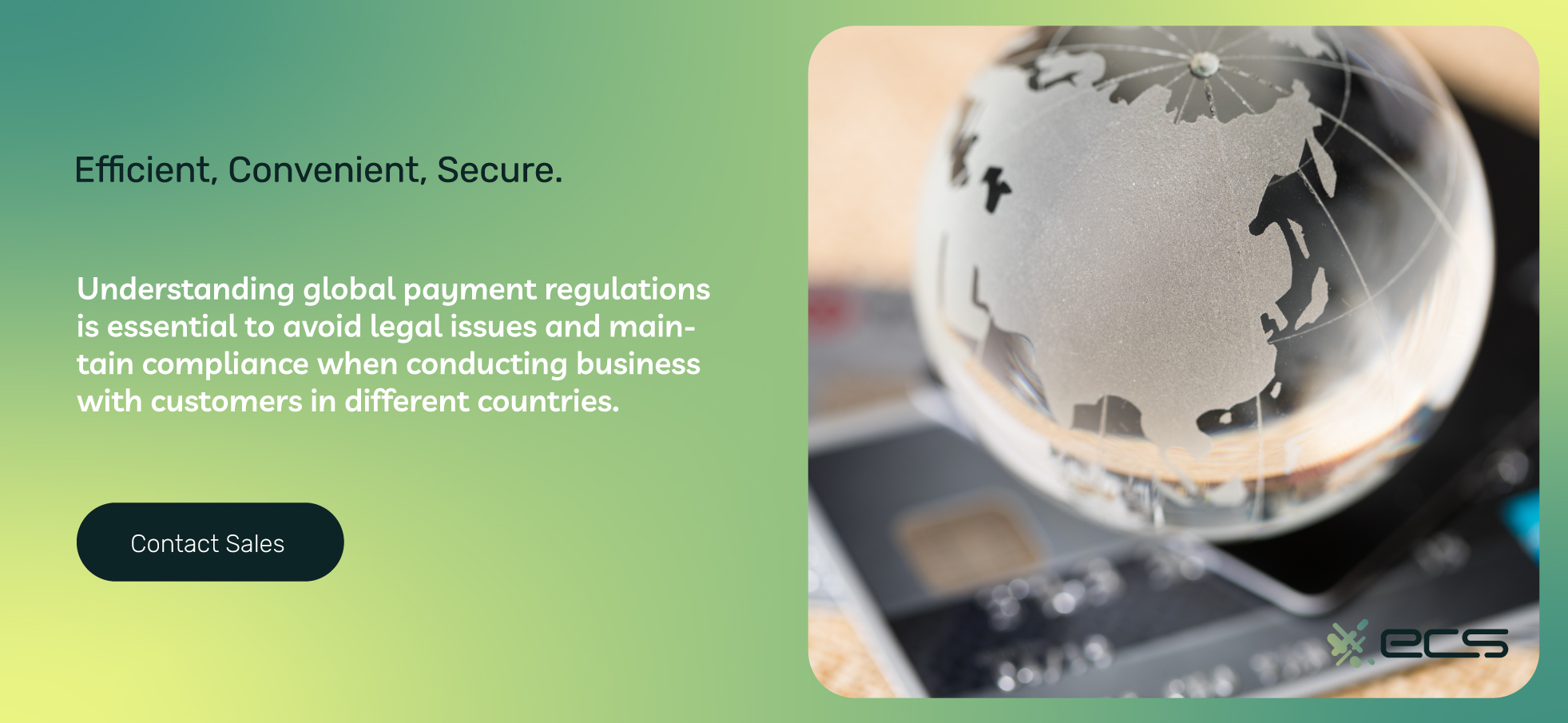
Types of Global Payments
Today, global payments can take many different forms. Methods such as standard checks, wire transfers, digital wallets, and even cryptocurrencies are all used for global or cross-border payments.
With so many different institutions involved in various global payments and currencies, tracking can be more difficult. This increases the overall fraud risks when dealing with global payments. Any business involved in global payments will want to create a risk mitigation strategy to deal with the increased possibility of fraud or even data breaches.
Regulatory compliance is also a significant hurdle with global payments. Many countries, including the United States, have anti-money laundering (AML) laws that require certain disclosures when sending money across borders. These regulations generally also cover money received from foreign sources.
There are also regulations regarding Know Your Customer (KYC) laws. These are regulations that require businesses to acquire information on customers or those sending them money.
Due to the overall increased regulatory compliance and fraud risk, companies dealing in global payments should adopt a comprehensive strategy to stay compliant and manage fraud.
Understanding AML Laws & Regulations
One of the biggest concerns businesses dealing with global payments face is compliance with AML laws. You’ve likely heard of AML laws but may not have dealt directly with them.
AML laws fall under the purview of the Financial Crimes Enforcement Network(FinCEN). FinCEN is an agency under the Department of Treasury. It creates AML regulatory frameworks and conducts enforcement and investigations of wrongdoing.
FinCEN also shares information regarding AML with the Securities and Exchange Commission (SEC).
There are a handful of best practices that any business can use to aid in compliance with AML laws. Most of these pertain to money services businesses (MSB), but they are a solid framework for any business that receives or transmits global payments.
Assign a Dedicated AML Officer
You should assign someone at your company to be a dedicated AML officer. This person will oversee your overall AML compliance strategy and flag any issues they detect that may fall out of compliance.
This person should have the authority to make decisions or implement initiatives as necessary to remain compliant.
Create Protocols And Internal Controls
Once you designate your AML officer, you can create protocols and internal compliance controls.
To begin, you’ll want to outline the key risks that could cause you to fall out of compliance. Your risks may include specific types of transactions or specific customers in various regions of the globe.
Your goal should be to determine where your risk is and focus your efforts on those transactions. For most businesses, only a small subset of payments will fall under this category, simplifying your overall AML compliance controls.
Training
You likely have employees dealing with payments that fall under your newly designated AML internal controls and procedures. You will want to create training materials to ensure these employees understand your processes and how to remain compliant.
It’s also important to have designated contacts and lines of communication so employees can reach out if they detect any AML issues. It’s always best to catch AML compliance issues as early as possible to reduce the possibility of fines or worse.
Consider Third-Party Auditing
For specific organizations, you may want to consider using a third-party service to audit your internal controls and processes. This can ensure you’ve covered all your bases, and you can have confidence knowing that your AML compliance policies are up to date.
As digital payments evolve, so will AML regulations. This means staying on top of modernization efforts that will impact your global payment processes is critical.
KYC (Know Your Customer) Standards & Compliance
A key part of AML compliance is KYC, or knowing your customer. This is mostly for financial services companies, but it applies to all businesses that receive funds from customers.
KYC compliance comes down to three core components that your business should follow regarding verifying the identity of and assessing customers who send you money.
Below, we’ll outline these three compliance areas.
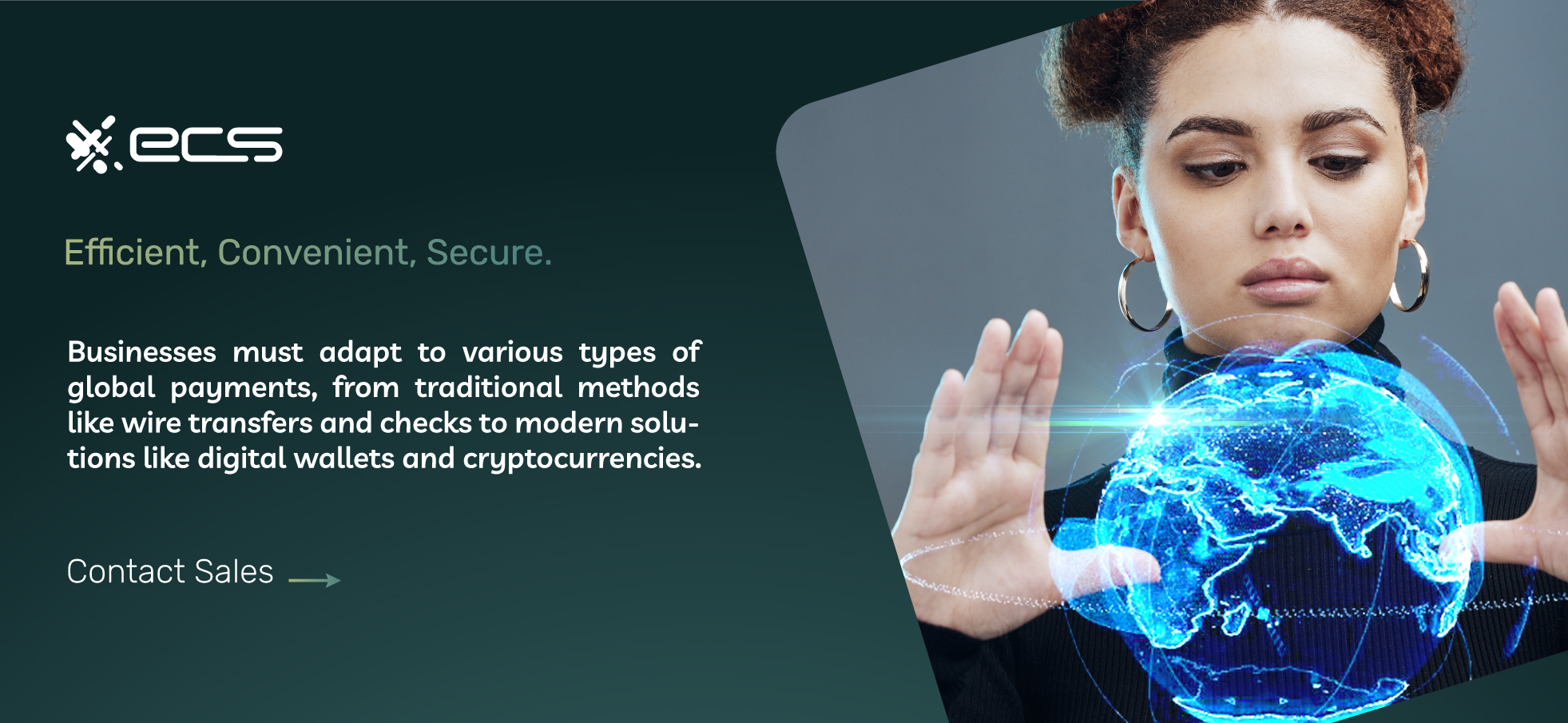
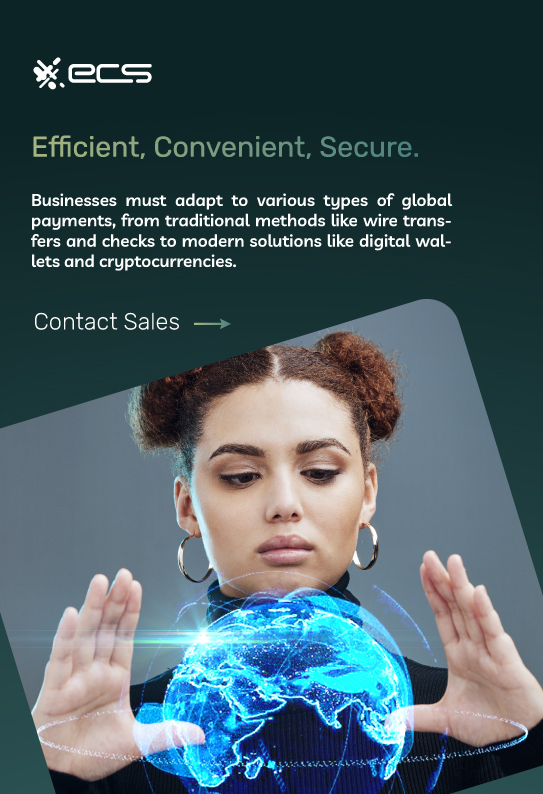
Customer Identification Program (CIP)
As part of the original Patriot Act, CIP involves verifying who customers are. The goal is to fight money laundering, terrorist funding, and other illicit uses of the global payment infrastructure.
Once again, these regulations are mostly reserved for financial services companies. However, depending on whether your business accepts money and the services you provide, you may be subject to these provisions and regulations.
As a basic starting point, a CIP program will identify the following.
- Legal Name
- Birth date
- Legal address
- Identification number (government-issued)
Similar to overall AML regulations, you must perform a risk assessment to determine which customers require compliance.
Customer Due Diligence
Once you’ve obtained identifying information from a client or customer, you must perform customer due diligence. This means you perform a risk assessment procedure to ensure the customer is trustworthy and not at risk for money laundering or other illicit activities.
Based on your risk assessment, you can choose from 3 levels of accepted customer due diligence.
SDD: Simplified Due Diligence is when you assess the overall AML or fraud risk to be low. In these cases, the amount of transactions may be small or infrequent. You will only need to confirm basic customer information.
CDD: Basic Customer Due Diligence is the normal due diligence procedure required. With this, you’ll obtain all the necessary information and confirm it. Most customers will fall under this basic level of due diligence. You can view this as a baseline for your KYC procedures.
EDD: Enhanced Due Diligence is reserved for high-risk customers and transactions. Most customers or transactions that fall under EDD must comply with specific regulations and legislation. For example, these customers may originate from particular countries where enhanced AML guidelines apply.
Ongoing KYC
You will have to assess and confirm your customers initially, but you will also want to continually monitor and update your risk assessment if their situation changes.
For example, an increase in transactions or a change in the types of transactions a customer makes can change their risk level.
Part of KYC’s best practices is to choose regular intervals to reexamine your KYC data for customers and ensure they are still relevant. Depending on the nature of the transactions, you can perform this annually or quarterly.
In some cases, financial services companies will submit a Suspicious Activity Report (SAR). There are specific triggers for transactions and cross-border payments that require a SAR.
Finally, when dealing with customer information, some areas require GDPR and payments to adhere to specific guidelines for protecting consumers. These are mostly consumer data protection laws, but they also apply to banks and other financial institutions dealing with customer data.
Technologies Making Globally Payment Regulation Easier
While dealing with global payment regulations can seem like a burden, they are there to protect the overall financial system and help maintain international payment integrity.
However, many new innovations are already available, and a few are on the horizon, which will make global payments much more straightforward.
The following technologies are currently helping to remove much of the friction of global payments, allowing businesses to expand into new markets more easily.
Open Banking Standards
Open banking allows secure third-party access to financial and banking information. A secure API (Application Programming Interface) manages access.
Open banking allows creative fintech firms to build new systems that remove much of the friction from electronic payments, including global payments.
With open banking, businesses can also better monitor transactions for risks or anomalies that may impact their regulatory compliance.
Open banking regulations can differ by country and region. In The United Kingdom and parts of Europe, the Payment Services Directive (PSD2) regulates many payment services and similar technology.
Central Bank Digital Currencies (CBDC)
Central Bank Digital Currencies (CBDCs), are an old idea, but they are currently being developed and tested in several countries.
CBDCs are different from cryptocurrencies. The government distributes and controls a CBDC, akin to a traditional currency.
However, being 100% digital may open up many opportunities for cross-border payments that are faster to settle and easier to document and track.
While CBDCs have drawbacks, one benefit is their ability to help with regulatory compliance due to their inherent ability for easier tracking and monitoring.
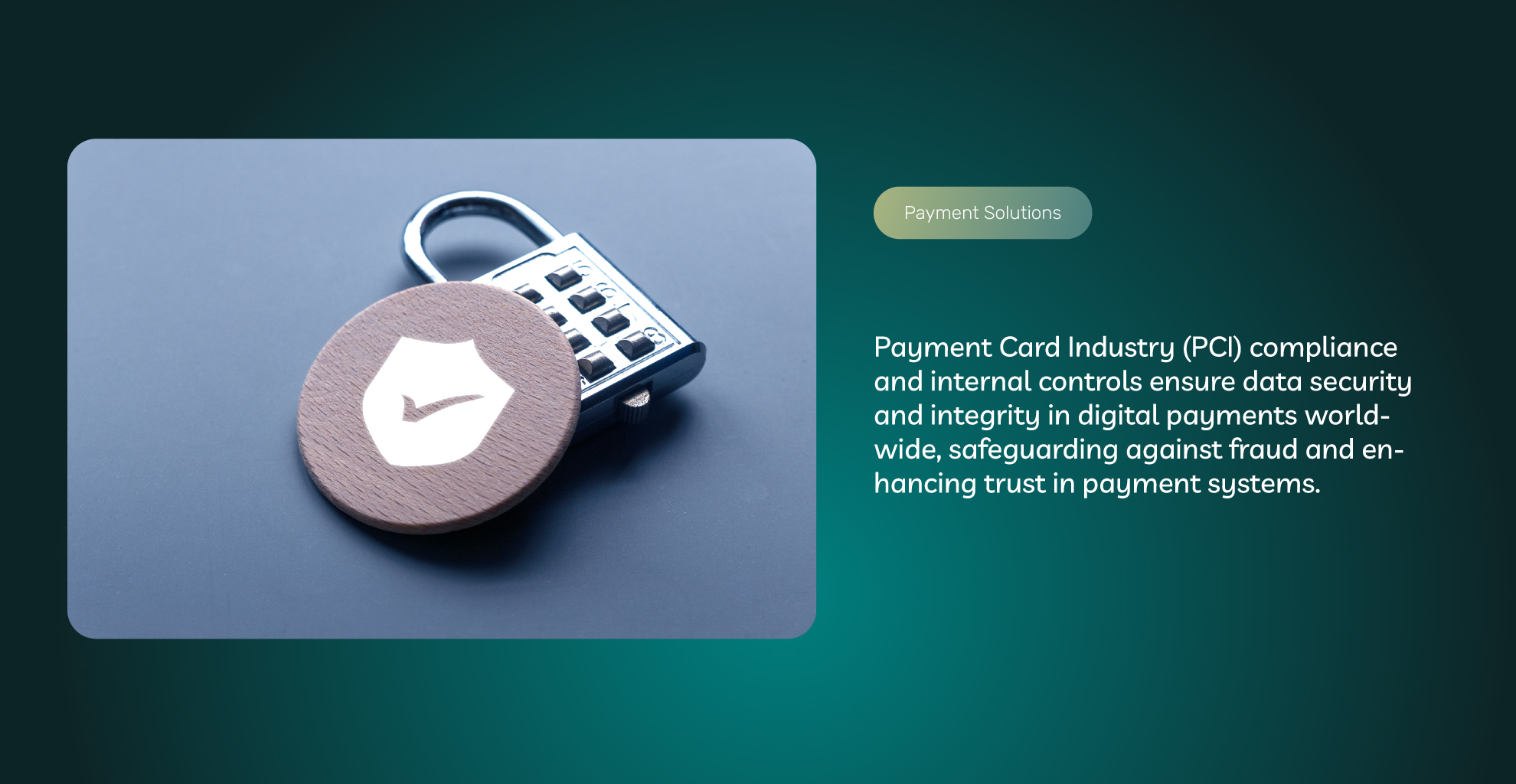
Cryptocurrencies
At the moment, cryptocurrency regulation is a gray area in a lot of respects, yet these currencies are actively facilitating global payments and cross-border transactions. The fintech regulatory environment hasn’t caught up to advances in digital currencies.
Cryptocurrencies lend themselves to global payments because they are usually peer-to-peer. This means the sender and the receiver set up their own transaction, and there is no intermediary.
The receiver can hold the cryptocurrency or choose to settle the amount into U.S. dollars or whatever currency they choose at a later date.
This type of flexibility offers almost immediate global payments and reduced costs, often just a fraction of traditional wire transfers.
However, regulations are still catching up with this new technology, and accepting global payments in cryptocurrency can be extremely tricky.
Some high-profile companies, such as Tesla, have experimented with accepting cryptocurrency payments. However, in these cases, the company usually immediately converts all cryptocurrency payments into FIAT currency to help aid accounting and regulatory compliance.
However, as digital wallets, CBDCs, and cryptocurrency become more popular, these methods will replace traditional global payments due to their speed, low costs, and efficiency.
Regulatory Technology (Regtech)
Regulatory technology is an industry that provides software so companies can more easily comply with laws such as the Financial Action Task Force (FATF) guidelines, FinCEN regulations, and E-Money Regulations, as well as other agency guidelines around the world.
Regtech can also help with financial sanctions compliance requirements for payment transactions involving countries with specific regulations due to permanent or temporary sanctions.
SWIFT
The Society for Worldwide Interbank Financial Telecommunication (S.W.I.F.T.) network standards allow the SWIFT messaging system to be used for global money transfers between businesses and governments. These standards facilitate automation and facilitate easier communication across the system.
Overall Data Protection In Payments
Within the payment industry, there are internal controls to ensure data security. For example, Payment Card Industry (PCI) compliance helps ensure the integrity of payment systems used for digital payments worldwide.
These industry guidelines cover payment methods and transactions, such as mobile payments, digital wallet compliance, and ACH payments.
The financial market in individual countries has its own internal controls similar to PCI. While these aren’t financial regulations put in place by a government, they are still vital to protecting the overall payment system and require compliance.
More Help Accepting Global Payments & Ensuring Compliance
Accepting global payments does present a few challenges, but the reward is worth it as your business accesses new markets and opportunities.
If your business wants to accept global payments, contact ECS Payments. We provide merchant and billing solutions so businesses can accept digital payments, including credit and debit cards, from around the world.
ECS Payments offers several payment gateway options for more international support than traditional merchant account providers.
Contact ECS Payments and speak with one of our international payment experts to learn more about our innovative merchant solutions for global payments.
Frequently Asked Questions About Navigating Global Payment Regulations
Global payments are any payment or transfer of funds where the sender, receiver, or the different banks originate in different countries. They can be for business-to-consumer (B2C) or business-to-business (B2B) transactions.
There are several risks associated with global payments, including:
•Different international regulatory framework
•Cross-border payment laws and regulations
•Increased fraud
•Compliance challenges
AML (Anti-Money Laundering) laws and regulations aim to prevent money laundering and terrorist financing. They require certain businesses to implement security measures like KYC (Know Your Customer) procedures, to verify the identity of their customers and assess their money laundering risk. This includes obtaining a name, date of birth, address, and identification number.
Several technologies are making global payment regulation easier, including open banking standards, central bank digital currencies (CBDCs), and Cryptocurrencies.
Best practices for dealing with global payments to stay in compliance with regulations and mitigate risks include:
•Assigning a dedicated AML officer.
•Creating protocols and internal controls.
•Providing employee training.
•Using third-party auditing.
